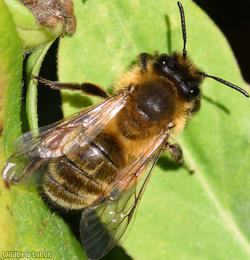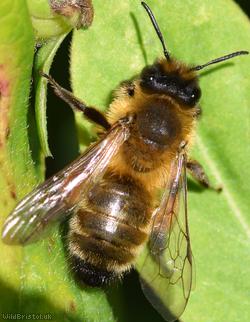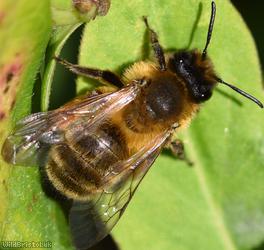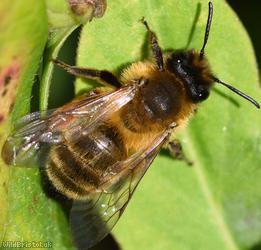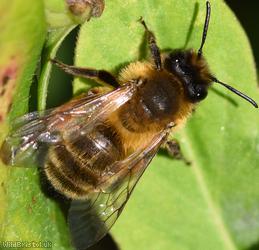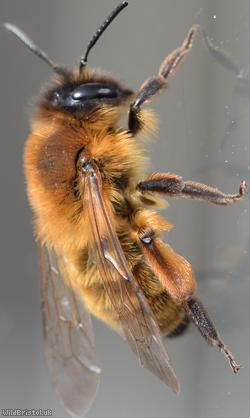Buffish Mining Bee - Andrena nigroaenea
Favourite Photos
Species Description
Fairly common and widespread throughout England, Coastal Wales and Eastern Scotland. Scattered elsewhere. Habitat includes: Anywhere with a good supply of flowers and short turf with bare ground and well-drained soil such as gardens, parks, allotments, churchyards, meadows, grassland, field margins, wasteland, old quarries, roadside verges, coasts, heaths etc. Flight period March (sometimes February) to July (sometimes August) (peaks April to May). Length: Up to 14 mm. Life story: Nesting can be singly or in quite large aggregations, often mixed with other Andrena species. It is the host of Gooden's Nomad Bee (Nomada goodeniana) and Marsham's Nomad Bee (Nomada marshamella). Diet: Pollen and Nectar from a wide variety of blossoming shrubs and flowers especially Dandelions.
ID:
Females:
- Honey Bee-sized
- black-haired face
- dense brown hair pile on the thorax
- dense buff pile on tergites 1-4 that contrasts with the black hairs on tergite 5 and the tip
- hind tibiae are dark with a bright orange pollen brush
Males:
Looks the same as the Female but smaller and slimmer with the face brown and black-haired.
Confusion species:
Andrena tibialis (Grey-gastered Mining Bee) can resemble both sexes of A. nigroaenea but have the top of the propodeum rugose and the hind tibiae orange in the females but with the apex orange in males. Female A. tibialis also has the abdomen greyer-haired and the face white-haired.
